Australian storms can turn from dramatic to dangerous in the blink of an eye, potentially leaving extensive damage to your home. Home insurance may help cover you financially if your home is damaged by a storm, but the level and type of cover will differ from policy to policy.
‘Storm season’ is a common term in Australia. Between September and March typically sees hot weather and more frequent storms, according to the Bureau of Meteorology (BoM). Already this storm season, we have seen severe thunderstorms affect parts of the east coast of Australia, bringing giant hail and flash flooding.
Over the next few months, the BoM has warned there will also be an increased risk of flooding for the east coast and tropical cyclones in the north, due to the La Niña weather system. La Niña typically brings about above-average rainfall during spring and early summer and warmer-than-average ocean temperatures which can generate more tropical cyclones, according to BoM.
Did you know the six wettest winter–spring periods on record for eastern Australia occurred during #LaNina years?
In the #MurrayDarlingBasin, winter–spring rainfall averaged over 13 La Niña years was 39% higher than the long-term average. Learn more: https://t.co/g1xVB3vqlU pic.twitter.com/DMVEE5Oop5
— Bureau of Meteorology, Australia (@BOM_au) October 21, 2020
With the potential for more storm and cyclone activity on the horizon, it might be a good time for Aussie homeowners to consider their home and contents insurance options when it comes to storm damage cover. We cover:
- Does my home and contents insurance cover storm damage?
- What type of storm damage is typically covered by home and contents insurance?
- What type of storm damage is often excluded from home and contents insurance?
- Storm and flood cover: What’s the difference?
- How can I lodge a claim for storm damage as part of my home and contents insurance policy?
- What are some tips to prepare my home for a storm?
You will need to check with the insurer as to whether the below home insurance policies cover storm damage.
Does my home and contents insurance cover storm damage?
At the time of writing, all home and contents insurance policies on Canstar’s database include cover for storm damage. However, the specific storm events and type of damage covered will vary from policy to policy.
For example, on Canstar’s database at the time of writing:
- 94% of home insurance policies cover damage and loss to gates and fences as a result of a storm (but generally only if the gate or fences are structurally sound and well-maintained)
- 77% of home insurance policies cover damage from a landslide as a result of a storm (but generally only if the landslide occurs within 72 hours of the storm)
- 33% of home insurance policies cover damage due to a storm surge (ocean movements caused by wind action and low pressure on the ocean’s surface)
- 21% of home insurance policies cover damage to retaining walls as a result of a storm
Because not all policies cover the same loss or damage caused by a storm, it’s important for homeowners to check the product disclosure statement (PDS) of a policy carefully to make sure they have the right type of cover for their needs.
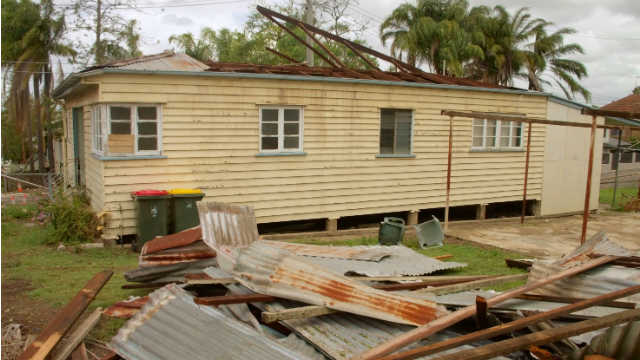
What type of storm damage is typically covered by home and contents insurance?
While the type of storm cover included in a home insurance policy will vary from provider to provider, here are some of the common inclusions you may see:
- Loss or damage caused by strong winds
- Loss or damage caused by lightning strikes or a power surge caused by lightning
- Loss or damage caused by earth movement (e.g. a landslide, mudslide or erosion) that is caused by a storm and occurs soon after a storm (e.g. within 72 hours)
- Loss or damage caused by fallen trees and other debris
- Loss or damage caused by the escape of rainwater from pipes, drains or gutters
- Loss or damage caused by surface rainwater run-off from surrounding areas as a result of a storm (and usually within 24 hours of the storm)
What type of storm damage is often excluded from home and contents insurance?
Here are some of the common exclusions you may see when it comes to storm cover in a home insurance policy:
- Loss or damage caused by a flood (unless you have taken out flood cover or it is included in your policy) – more details below
- Loss or damage caused by actions of the sea (e.g. storm surge, high tide, tsunami). At the time of writing, 67% of home insurance policies on Canstar’s database do not cover damage caused by a storm surge.
- Loss or damage from rainwater entering your home through an opening not caused by a storm (e.g. an open window or a gap in the roof from previous damage or deterioration)
- Loss or damage to fixtures that are not in good working condition (e.g. damage to a fence that is already rotted or broken – the insurance assessor will determine this)
- Loss or damage to swimming pool covers and spa covers
- Loss or damage to retaining walls
- Loss or damage to a sporting surface or court
For more information on the storm damage inclusions and exclusions in a home insurance policy, read the PDS thoroughly, or call your insurer to ask.
Storm and flood cover: What’s the difference?
While a storm may cause a flood, these weather events are often separated by insurers into two types of cover in a home insurance policy.
Flood cover may come as standard in a policy, or may be offered as an optional extra for an additional premium. Different insurers may use different terms to explain what they will and won’t cover in relation to floods. However, the standard definition used by insurers to define a flood is “the covering of normally dry land by water that has escaped or been released from the normal confines of: any lake, or any river, creek or other natural watercourse, whether or not altered or modified”.
→Related article: Does my home or car insurance cover flood damage?
If your home and contents insurance doesn’t cover flood damage, and you have not taken it out as an optional extra, you may still be covered for some types of flood damage to your home where the flooding can be attributed directly to a storm and occurs soon after the storm has hit your area. If there is confusion around the source of where the flooding has originated and whether it can be linked to a storm event, your insurer may use the services of a hydrologist (a scientist who studies the movement of water) to help work on your claim.
Other forms of rain or water damage may also be included in your policy under storm cover. For example, at the time of writing, all home insurance policies on Canstar’s database include cover for damage from rainwater run-off (when heavy rain from a storm flows over the ground and causes drainage systems to fail, so the rain then enters nearby areas and properties).
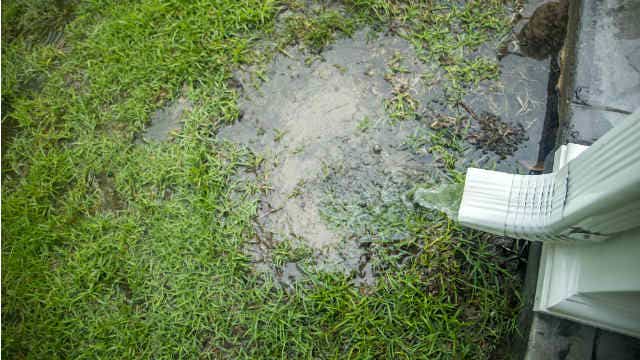
If you are in or near a flood zone and your standard home insurance may not cover flood damage, whether caused by a storm or not, you may want to consider taking out a policy that offers flood cover as standard, or adding optional flood cover to an existing policy. However, keep in mind that flood cover, particularly for properties in or near a flood zone, could come with a higher premium. Remember to review the terms and conditions of the cover available to make sure it suits your needs.
How can I lodge a claim for storm damage as part of my home and contents insurance policy?
If your home has been damaged by a storm, the most important thing is to ensure your safety. Disconnect all electronic devices and stay away from fallen power lines. If the house has sustained structural damage, take shelter in the strongest room (usually the bathroom) and call 000 or the SES.
Once the storm has passed and you’ve ensured the safety of yourself and your loved ones, contact your insurer and carefully assess the damage, including taking as many supporting photos as you can. Try to track down any receipts you have for lost contents too, as this could greatly assist your claim.
You can send relevant details to your insurer, along with your claims documentation. The insurer may then send an assessor to inspect your property. The insurer will accept or deny your claim based on how well it matches with the assessor’s report. If there are multiple claims made to your insurer due to a significant storm event, there may be some delays in the assessment of your claim.
Your insurer will then make a decision about whether your claim is successful. Your home and contents policy will list what you are and aren’t covered for in the event of a storm, so it’s important to be aware of your rights. You can continue your communication with your insurer even after you are informed about the decision for your claim. If you are not satisfied, you can complain in writing to your insurer’s Internal Dispute Resolution Department or escalate the issue to the General Insurance Division of the Australian Financial Complaints Authority (AFCA).
What are some tips to prepare my home for a storm?
To minimise the impact a storm has on your property, the Bureau of Meteorology and Suncorp recommend:
- Cleaning up outside. Bring undercover or secure items such as outdoor furniture, garden tools and children’s toys. These can all become dangerous projectiles during a storm.
- Trim your trees. You can prevent damage to your home and belongings by removing overhanging branches, particularly old ones. If the branches are difficult to reach or are near power lines, it is strongly recommended to seek professional help. Energex spends more than $70 million annually to maintain clearance between trees and power lines, and has a tree trimming program. Energex recommends hiring a qualified operator if you privately own powerlines. There’s also powerline planning advice available if you want to plant trees or vegetation, with a map at www.lookupandlive.com.au.
- Check your roof and gutters. If you have safe access to your roof, check for loose or damaged tiles or curling corners on corrugated iron sheets. It may also be a good idea to clean out your gutters and drains which can get backed up during heavy rainfall and send water into your home.
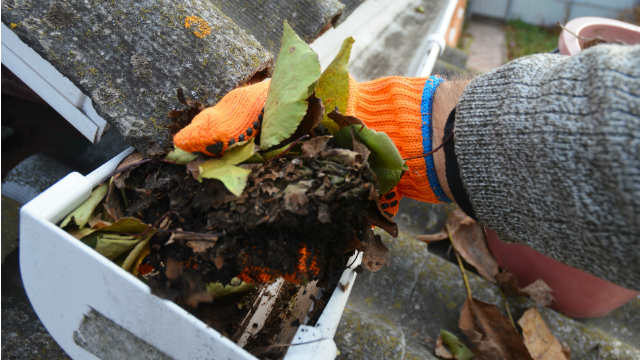
- Prepare supplies. Important things to include are torches, a battery-powered radio, extra batteries, a first aid kit, and any necessary medications – just in case of a prolonged power outage. Bottled water could also be a good idea, and some non-perishable food. You may also want to consider purchasing a small portable generator to help provide a backup source of power.
- Charge your mobile phone. Charge your phone and any other electronic equipment such as laptops or iPads/tablets before the storm. That way, even if the power goes down you can still make calls. If your car has a usb port you can also charge your phone through your car’s battery or plug it into your laptop via the usb port to charge via your computer’s battery. There are also portable smartphone chargers (or power banks) available to purchase.
- Identify and care for your pet. Cats and dogs may get anxious during storms and run away from home. RSPCA NSW advises that you should get your pet microchipped and have clear identification on their collar. The BoM says to bring your pets inside if a storm is brewing.
- Secure your car. If you have a garage or carport, it’s important to park your car undercover if a storm is on its way to help protect it from hail or other debris, and to close the garage door if you have one. If you don’t have a carport or garage, you may be able to park your car undercover at your local shopping centre car park.
In addition to these steps, it may also be a good idea to check your home and car insurance policies are valid and up to date.
→Related article: Car insurance policies for hail and storm damage
You can check to see whether a storm is on its way by signing up for storm alerts on your phone or via email from your local council (if available), downloading a storm alert phone app (such as the BoM or Weatherzone app), listening for any emergency announcements on your radio (such as from your local ABC radio station) and checking the BoM website for warnings and to view the local radar imagery.
Once the storm is underway, do not go outside unless you are absolutely certain it is safe to do so, and be sure to watch out for fallen trees and power lines.
This article update was reviewed by our Sub Editor Jacqueline Belesky and Senior Finance Journalist Shay Waraker before it was published as part of our fact-checking process.
Cover image source: Heath F Missen (Shutterstock)
→ Looking to find a better deal? Compare car insurance, car loans, health insurance, credit cards, life insurance, as well as home loans, with Canstar. You can also check your credit score for free.
This content was reviewed by Editor-in-Chief Nina Rinella as part of our fact-checking process.


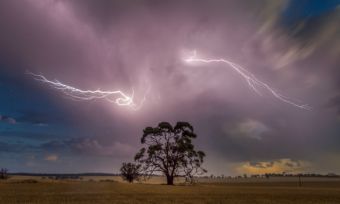
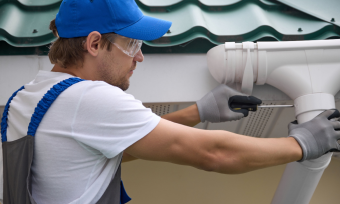
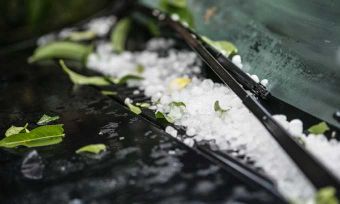


Share this article